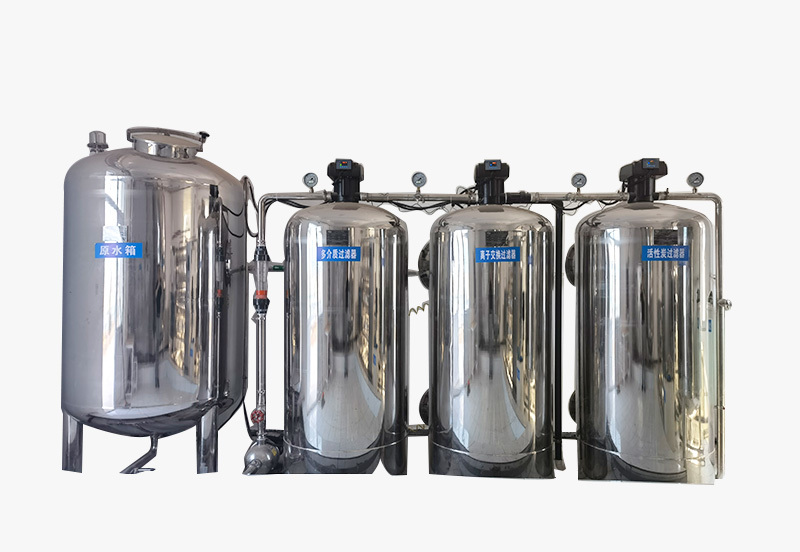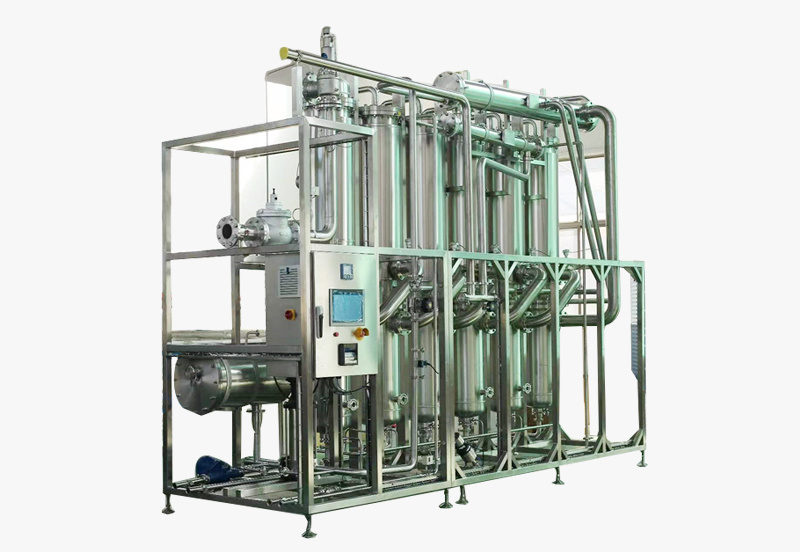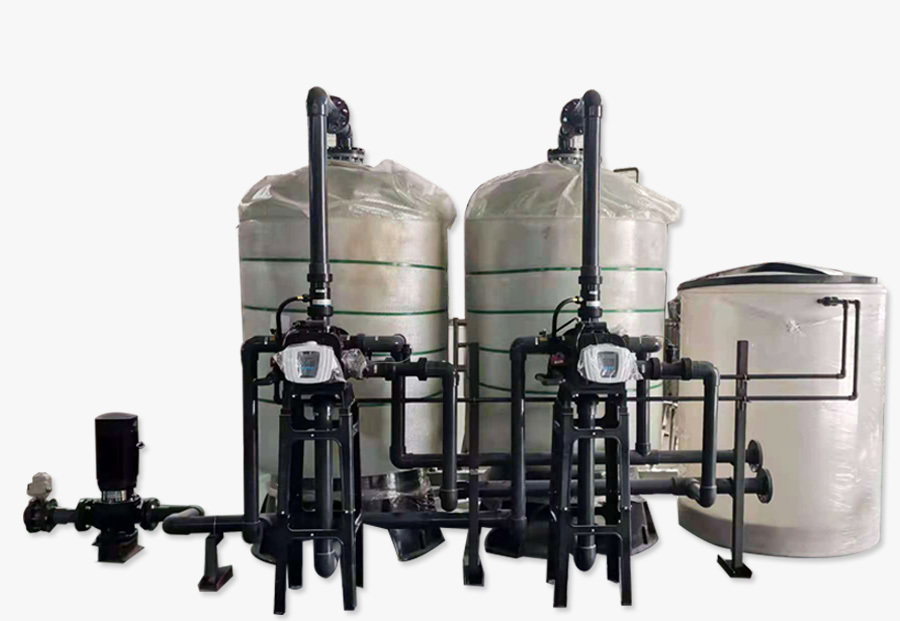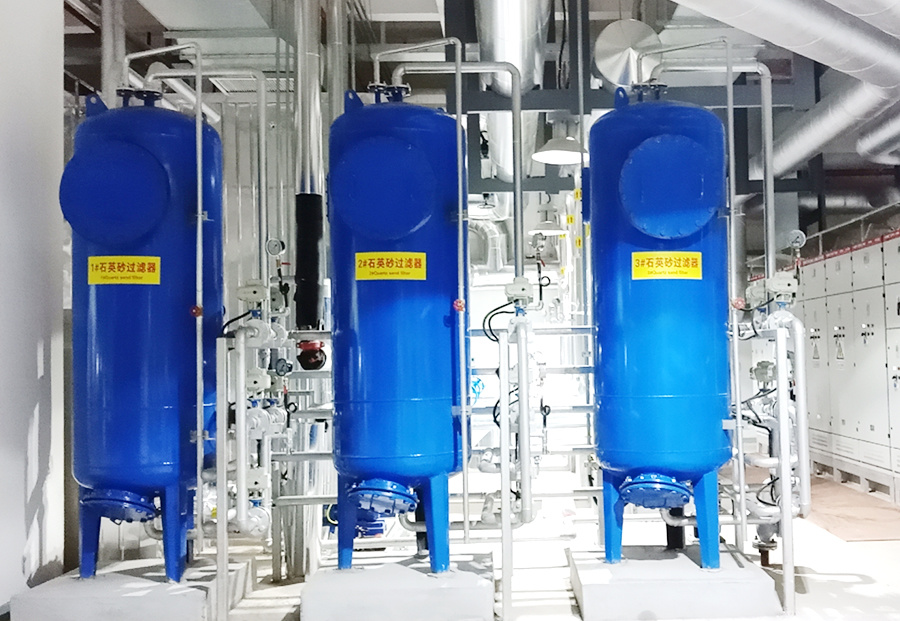Activated carbon filter
Tags:
Belongs to Category:
Activated carbon filter
Product Description
► Working Principle
Activated carbon manufacturing involves two processes: dehydration and carbonization, which create a unique porous structure resulting in a large surface area and strong physical adsorption capacity. The second is activation, during which oxygen-containing functional groups (such as carboxyl, carbonyl, and hydroxyl groups) are formed on the surface, giving the activated carbon chemical adsorption and catalytic oxidation-reduction properties.
Activated carbon filters utilize the adsorption properties of activated carbon to remove impurities from water, purifying it. Its adsorption capacity is mainly reflected in the following aspects:
1. It can adsorb organic matter, colloidal particles, and microorganisms;
2. It can adsorb non-metallic substances in water such as chlorine, ammonia, bromine, and iodine (adsorption rate of free chlorine is over 99%);
3. It can adsorb metal ions such as silver, arsenic, bismuth, cobalt, hexavalent chromium, mercury, antimony, and tin ions;
4. It can effectively remove color and odor.
► Application Range
Activated carbon filters are widely used in water treatment projects in the food, pharmaceutical, electronics, and chemical industries. They serve as pretreatment equipment in water treatment, preventing water pollutants from contaminating subsequent equipment; they can also improve the taste and color of water.
► Main Features
1. Good adsorption and filtration effect, small footprint;
2. Easy to use and manage, low operating costs;
3. Long filter material service life;
► Equipment Composition and Performance
Activated carbon filter housings are available in materials such as fiberglass reinforced plastic, stainless steel, corrosion-resistant carbon steel, and acrylic. They are mostly cylindrical, with diameters generally ranging from Ø200 to 2500mm, and water treatment capacities from 0.3 to 49t/h. They are filled with activated carbon particles sized 0.4-2.4mm. Smaller ones are filter cap type, while larger ones use a quartz sand underlay. The maximum operating pressure is 0.6MPa. Different specifications of filters are selected according to the required water quality and quantity.
► Filter Media Treatment for Activated Carbon Filters
Before filling, it is best to treat the filter media: First, soak in a 3-5% HCL solution for 30 minutes, then rinse with clean water until neutral; then soak in a 3-5% NaOH solution for 30 minutes, then rinse with clean water until neutral (this method can also be used when the backwashing effect is not ideal after the equipment has been running for some time). After treatment, the filter media is filled. According to the requirements of water quality and quantity, the general filling height is between 1000 and 2000mm. Small filter cap types do not add a support layer; others add a 200-300mm quartz sand support layer at the bottom, layered from top to bottom, with particle sizes of 2-4mm, 4-6mm, 6-15mm, and 15-25mm, each layer approximately 50-80mm thick. After the equipment is filled and sealed, the filter media is cleaned by backwashing. Open the backwash valve and the top drain valve, close other valves, adjust the backwash valve opening, and no carbon particles should appear in the wastewater. Clean until the effluent is clear.
► Operation of Activated Carbon Filters
1. Operation: After the filter media is cleaned, close the backwash valve and the top drain valve. Open the inlet valve and the bottom drain valve to perform a forward wash on the filter media. When the effluent water quality meets the requirements, close the bottom drain valve and open the outlet valve to put the filter into operation, supplying water to the next stage equipment. The filtration rate is generally 8-10m³/h.
Note: When starting operation, it is best to open the drain valve to drain a section of filtered water first, then close the drain valve before starting normal operation.
2. Backwashing: After using the activated carbon filter for a period of time, the chemical adsorption and catalytic oxidation-reduction performance of the activated carbon weakens, causing the treated water quality to decline. Due to the retention of organic matter, the filter pressure difference increases. When the pressure difference ≥0.05MPa, the system needs backwashing. Specific operation: Close the inlet valve and outlet valve, open the backwash valve and the top drain valve, allowing water to enter from the bottom of the tank and exit from the top, loosening the filter layer to remove impurities and restore performance. The time is about 10 minutes, and the backwashing intensity is controlled at 8-10L/m²·S.
3. Replacement of Activated Carbon Filter Layer: If the treated water quality cannot be achieved even after repeated backwashing, the filter media must be replaced.
The equipment specifications and dimensions of the activated carbon filter are the same as those of the mechanical filter
Leave a Message
Fill in your phone number and E-mail information, and we will contact you within one working day to solve your problems as soon as possible.
-- Recommended --
Shijiazhuang Tianwang Environmental Protection Technology Co., Ltd.
Shijiazhuang Tianwang Environmental Protection Technology Co., Ltd. is a high-tech enterprise specializing in the research and development, manufacturing and sales of water treatment equipment.
Contact Information
Production address: No. 9, Fengchan Road, Economic and Technological Development Zone, Shijiazhuang City
Office Address: 25th Floor, Block C, No. 310 Changjiang Avenue, Shijiazhuang High-tech Development Zone
Contact Number:
0311-89272359 0311-68039237
Enterprise Email:
twhbkj@163.com
Website: en.sjztwhb.com







